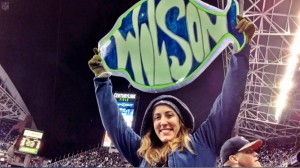
Los Angeles and several other cities are moving away from sodium lights in favor of low cost, and energy efficient LED lighting. An article on Gizmodo from Geoff Manaugh about this was posted in early February, and I’ve been chewing on it in my head for a little while, and here are my thoughts related to the changing lightscape.
Originally I went to film school for a better understanding of screenwriting, and while at the school I found that like Brick Tamland, I love lamp. The act of manipulating the scenery, the mood, the character, and the depth of a scene through the use of lighting drove me to spend hours studying the way lighting plays within the framing of a shot. Even now I spend time when watching a movie or TV show analyzing the lighting set ups that are being used to light the scene, though I don’t keep a journal of shots like I used to.
I mentioned it in class briefly the other night, but I feel the need to reiterate it. As with all of the things that we aim to learn observation is incredibly beneficial, and can help you produce some amazing works. Next time you are out in the evening, take time to look at the role lighting plays in your surroundings. Observe the differences in LED, fluorescent, halogen, tungsten and neon. Try to learn their color temperatures, and see how those colors blend and change, and look at the shadows that the lights throw.
Take a moment to observe the lights outside and inside of people’s homes. Notice the differences from one house to the next. Notice how the different colors of lights affect the overall appearance of the house. What lights do you prefer when you observe them, and does/will knowing the types of lights you like affect your work or the way you will light a scene?
It is only with the absence of light that we can truly appreciate how lighting has shaped our perceptions of the places we live.

New York City Blackout – Vincent Laforet
